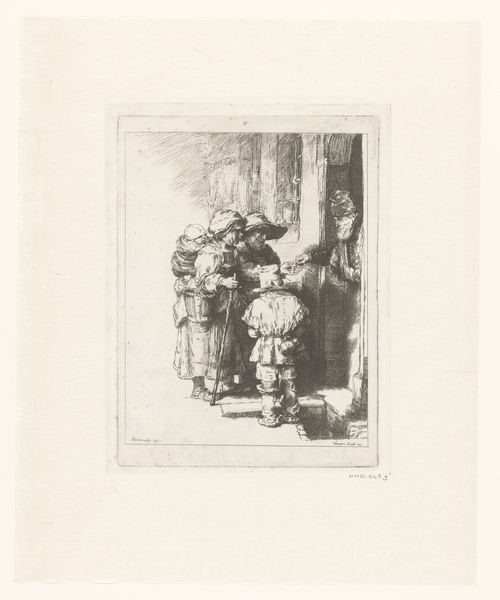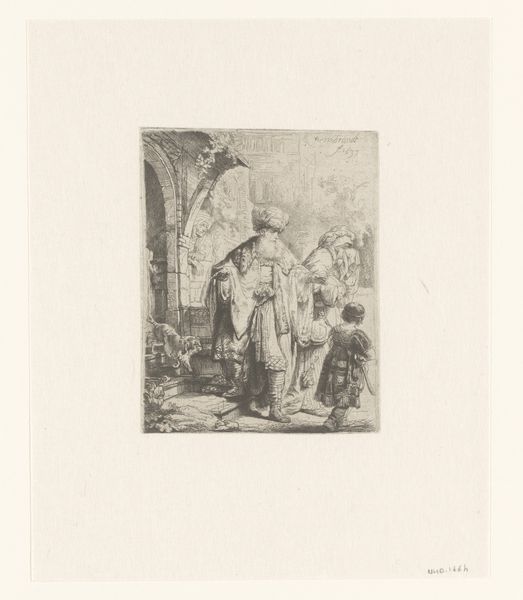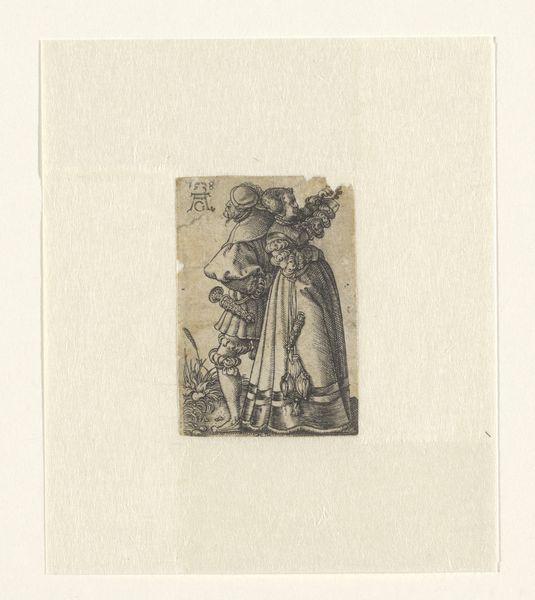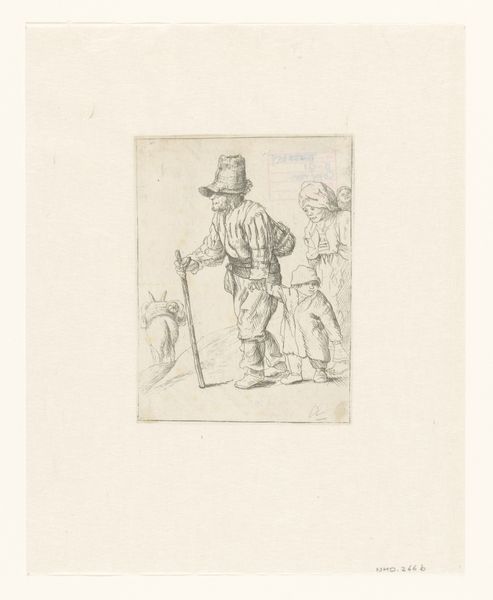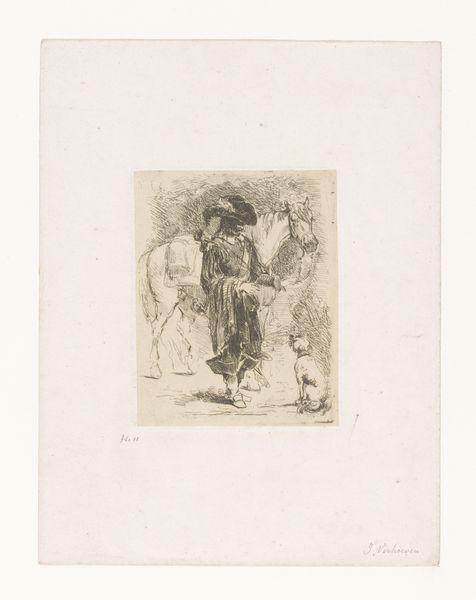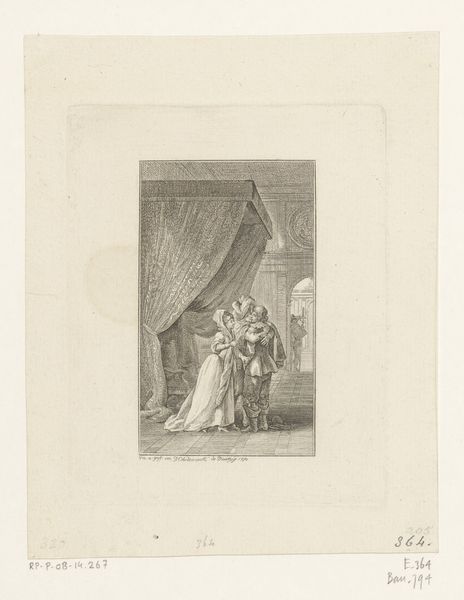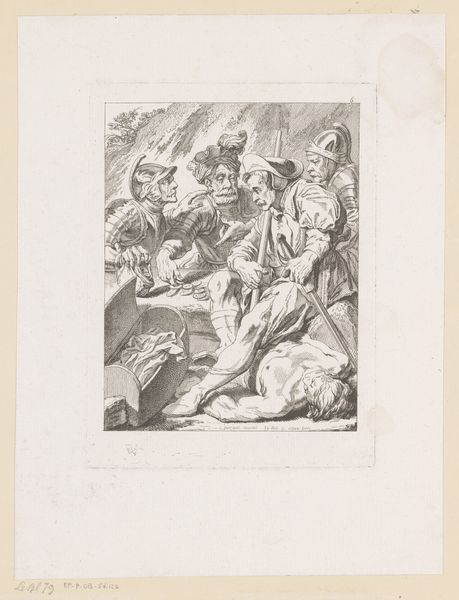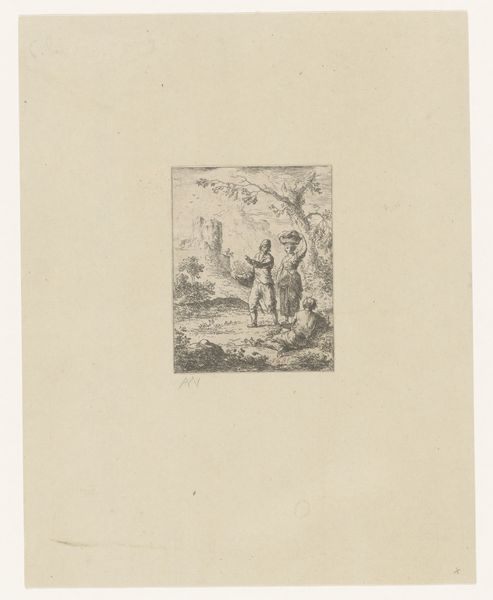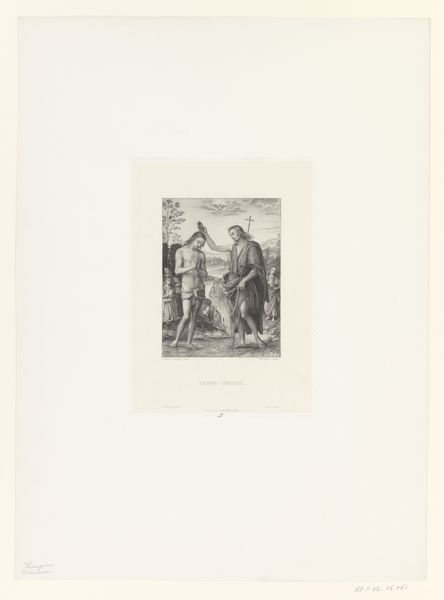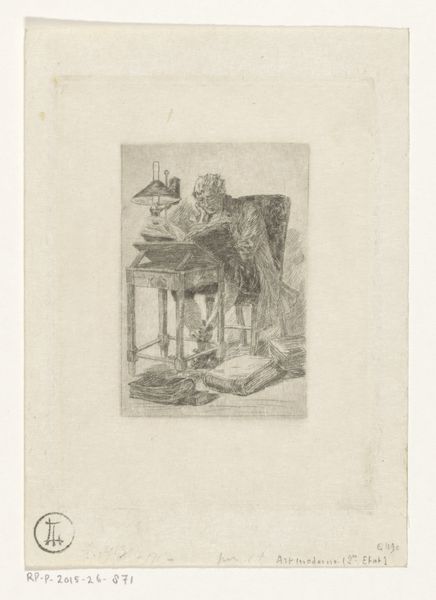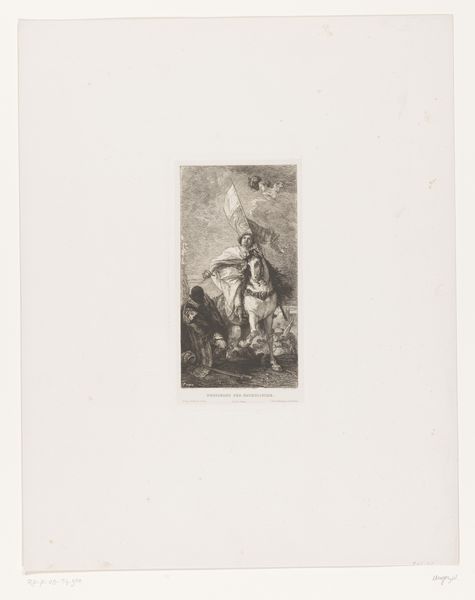
Dimensions: height 99 mm, width 77 mm
Copyright: Rijks Museum: Open Domain
Editor: So this etching is called "Death appearing to a wedded couple from an open grave" by Léopold Flameng, made in 1859. It definitely sets a somber mood, a memento mori. What catches your eye, what symbols stand out to you in this work? Curator: Immediately, I see the stark contrast between the figures of the newly married couple and the skeletal figure of death emerging from the grave. The iconography of death as a seated skeleton is fairly traditional. But note how he holds up a mirror to the bride. What reflection do you think he hopes she sees? Editor: Maybe the fleeting nature of beauty, or even a foreshadowing of her own mortality? Curator: Precisely. Mirrors have long been symbolic of vanity, but also self-knowledge. Flameng is layering a message. He's inviting us to consider the ephemeral nature of earthly pleasures against the backdrop of our inevitable end. This speaks to a persistent cultural anxiety, doesn't it? About beauty, love, and their staying power. Do you notice the detail in the couple's clothing versus the starkness of Death? Editor: Absolutely, it almost feels like a comment on class, or perhaps material obsession versus… ultimate truth. Curator: I think you’ve nailed it. How interesting that even amidst celebration, this period reminds itself of its end. What do you take away from your analysis? Editor: It's fascinating to see how death is personified here, it provides a mirror for me to confront mortality and understand the beauty and fleeting nature of life. Thanks. Curator: Indeed. A compelling image that continues to spark reflection across centuries!
Comments
No comments
Be the first to comment and join the conversation on the ultimate creative platform.
